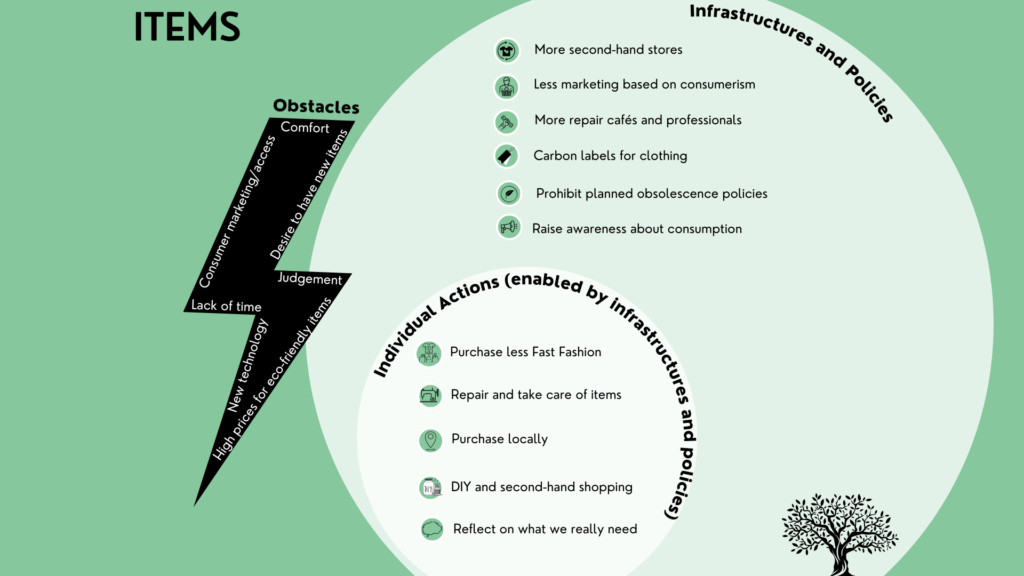By: Olivia Kotto Lobé, Academie Notre Europe facilitator

One of the first findings of the participants after having calculated their carbon footprint was that clothing and digital appliances contribute enormously to the participants’ carbon footprint. Here are some numbers to illustrate their importance:
-
“The fashion industry’s carbon footprint is estimated at 1.2 billion tons of CO2, or about 2% of global greenhouse gas emissions. If purchasing trends continue, this share will reach 26% in 2050 according to Greenpeace France “
-
“Digital appliances today account for 3-4% of global greenhouse gas (GHG) emissions and 2.5% of the national carbon footprint in France”.
What can I do to reduce my footprint in this area?
First, we thought about best practices to reduce our carbon footprint:
Buying as little as possible (sufficiency) and increasing the lifespan of our objects.
But how? By taking better care of our belongings and prioritizing repairing them.
If, however, purchasing is necessary, it is important to evaluate the real need of the item and turn to the circular economy through second hand, rentals, upcycling and reconditioned appliances. DIY (“Do it yourself”) projects are also a way to become more aware of the raw materials involved in manufacturing an item.
Sometimes it seems inevitable to avoid new things (see below). In this case, it is better to opt for high-quality items that are sustainable, local and low tech.
What holds me back? (Obstacles)
Consumption habits are anchored in our daily life. They bring us comfort and pleasure. It has never been so easy to buy – marketing is a big part of this (especially targeted marketing). On top of that, e-commerce sites are designed to make us addicted via the UX (user experience) design. The improvement of payment methods (contactless, split payment) also makes it easier to consume comfortably.
Responsible/ sustainable objects are more expensive. Additionally, there is social pressure to own new technologies and the problem of planned obsolescence (where objects are designed to break after a short time so that a new item has to be bought to replace it).
What could help me change?
– Putting an end to planned obsolescence at the EU level (this has been banned in France since 2015.)
– Demanding more transparency in fast fashion
– Less aggressive marketing
– Implementing more places to repair items
– Increasing awareness of ecological issues (education)
Finally, the two chosen policies were:
-
A “carbon score label” for all newly manufactured products that would clearly indicate the carbon footprint of each product.
-
Motion sensors on street lamps and requiring businesses to turn off lights on their signs and windows from 10pm-7am.
And the chosen communication strategy was :
-
Advertising campaign with public personalities to promote second hand shopping.
The discussions were sometimes a little frustrating because we did not always have enough time to deepen certain concepts such as social and cognitive psychology and the theory of change.

